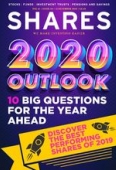Archived article
Please note that tax, investment, pension and ISA rules can change and the information and any views contained in this article may now be inaccurate.
Don’t get caught out by investment bubbles

One theory held by some market strategists is that a tidal wave of cheap cash, provided by central banks’ interest rate and quantitative easing policies, means we are witnessing ‘The Bubble of Everything’ as prices surge across a range of assets, ranging from equities to bonds to property to art, wine, sports cars, thoroughbreds, you name it.
It’s a beguiling theory but spotting a bubble is not as easy as it sounds. Former Federal Reserve chair Ben Bernanke flatly denied that the US housing market was in a bubble in the middle of the last decade, only for it to blow up in his face shortly afterwards.
Perhaps most famously of all, economist Irving Fisher argued in mid-October 1929 that ‘Stock prices have reached what looks like a permanently high plateau,’ only for the Black Monday crash to follow just a fortnight later.
It may be therefore worth revisiting this column’s preferred text on the topic of bubbles, Charles Kindleberger’s Manias, Panics & Crashes, to identify the sequence of events that can be seen through the history of previous market crazes, ranging from the South Sea Bubble of 1720 through to British canals (1790s), Latin American mines (1820s), US equities (1920s), Japanese equities and property (1980s) and global technology stocks (1990s), to name but a few.
BEEN THERE, SEEN THAT
Technology stocks were the first really big bubble of this column’s financial market career, which began in 1991, as can be seen from the chart of the NASDAQ Composite, which went parabolic in 1998 to 2000 but then fell so heavily that it wiped out four years of gains in half that time and then took more than a decade to reach its prior highs.
This decade has seen a sequence of such episodes in quick succession as, flushed by cheap liquidity and driven by the search for yield and returns superior to those offered by cash, markets have proved increasingly bubbly. A long list includes Chinese equities in 2014-15, Bitcoin 2017-18 and Cannabis and marijuana stocks in 2019, a fad which is already leaving many portfolio builders with burnt fingers.
BUBBLE CHECKLIST
Looking at the patterns of past bubbles may help investors duck the next disaster which will, inevitably, unfold at some stage.
This is because the details may change from bubble to bubble but human behaviour clearly does not and the running order is pretty consistent.
The starting point for a bubble is a new investment opportunity, one that may be genuine or even one with just a big enough grain of truth to be irresistible to those looking for a quick financial killing.
It could be anything from railways to cryptocurrencies and the more disruptive or revolutionary it seems, the better, as everyone likes to get in on a ‘new paradigm,’ don’t they?
The initial price rise catches the attention of newcomers as ‘fear of missing out’ (FOMO) starts to gather.
Investing (and operational) profits go into orbit and fresh cash is attracted, often in the form of borrowed cash. One oddity of the current passion for firms like Uber, Lyft and Peloton is they don’t make a profit themselves.
More copycats and imitators spring up and more credit is made available as asset prices keep running and the profits keep flowing.
Then the trouble starts. Insiders start to lock in their profits by selling to the unwary at elevated prices and leave investors holding the bag. Prices initially correct but then rally as loyal supporters buy on the dips.
Initial signs of distress then start to sow real seeds of doubt. A new offering goes wrong, a firm runs out of cash and asset prices fail to reach their previous peaks. The queue of copycat flotations and management teams looking to sell their stock on a secondary basis gets longer by the minute and supply of paper begins to outstrip demand.
THE BIG CATALYST
A good, old-fashioned scandal then happens. Someone goes bust or accounts prove to be crooked or someone runs off with the money and investors realise they have been had.
Fear and revulsion replace greed, asset prices collapse as investors scramble to cut their losses and the recriminations begin as scapegoats are sought and publicly pilloried (or worse).
Investors can now judge for themselves where they feel they stand across any asset class they care to consider. Perhaps the easiest signal to follow is the emergence of copycat flotations or multiple versions of the same fund, active or passive, promising access to a hot new theme.
The experiences of cannabis stocks in 2019 certainly suggest as much and with that in mind, this column will be interested to see how many environmental, social and governance (ESG)-themed products and collectives launch in the coming months, alongside any which specialise in electric vehicles, even if it is still very early days for both.
Important information:
These articles are provided by Shares magazine which is published by AJ Bell Media, a part of AJ Bell. Shares is not written by AJ Bell.
Shares is provided for your general information and use and is not a personal recommendation to invest. It is not intended to be relied upon by you in making or not making any investment decisions. The investments referred to in these articles will not be suitable for all investors. If in doubt please seek appropriate independent financial advice.
Investors acting on the information in these articles do so at their own risk and AJ Bell Media and its staff do not accept liability for losses suffered by investors as a result of their investment decisions.

 magazine
magazine











